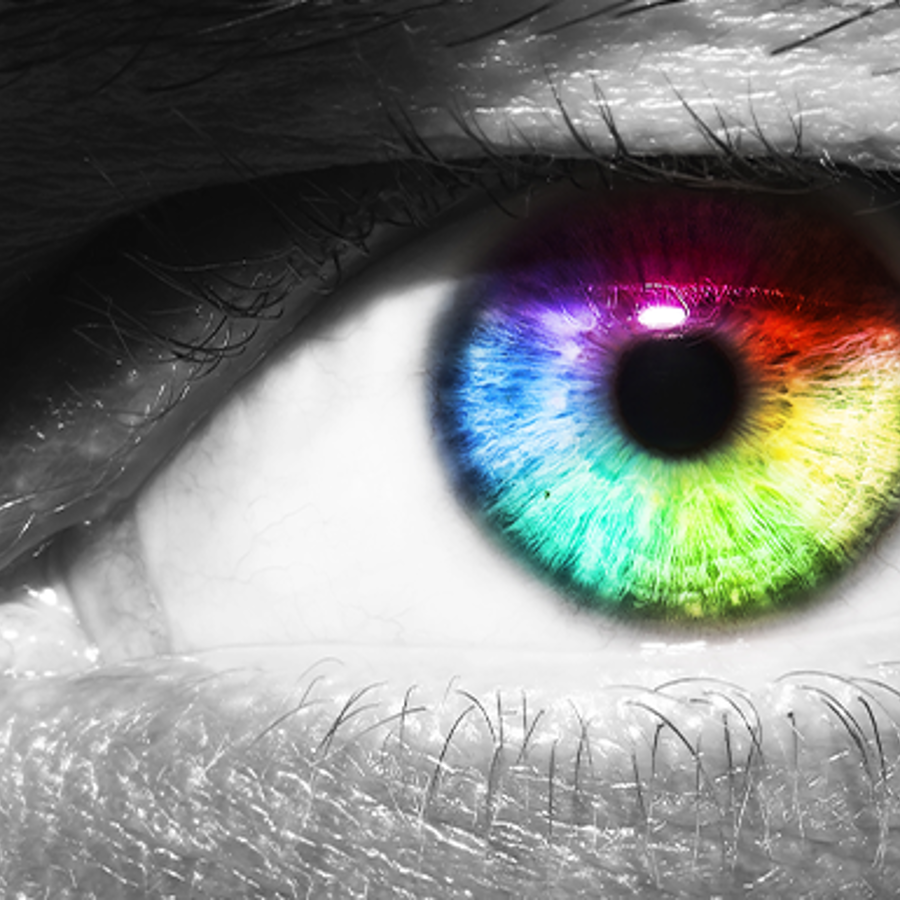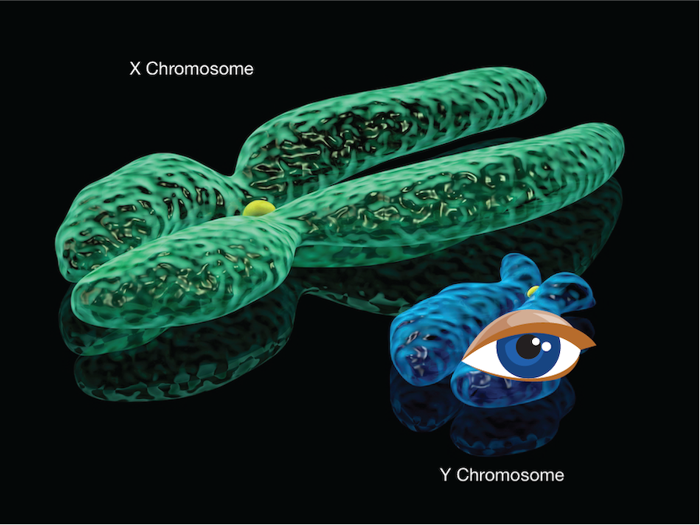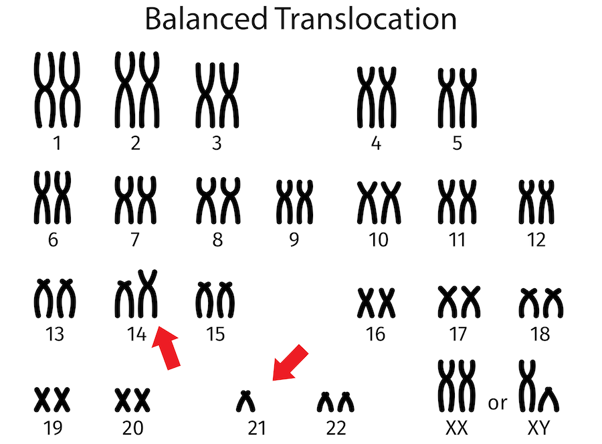
Is it possible that there is an eye color gene on the Y chromosome in my family?
May 22, 2013

- Related Topics:
- Eye color,
- Pigmentation traits,
- Dominant and recessive
A curious adult from Arizona asks:
"I have a question about the possibility of there being an eye color gene on the Y chromosome. In my family, my paternal grandfather had a very distinct shade of blue eyes. My father, brother and nephew (brother’s son) all have blue eyes. Only the males in our family have blue eyes. My mother and sister-in-law have green eyes. When you look at the four generations of males it seems like the blue eyes have only been passed father to son."
The most likely explanation here is simple chance. Each child in the family had a 50% chance for blue eyes and a 50% chance for green. It just happened that it came up blue for the four guys.
This is much more likely than an eye color gene on the Y chromosome. Especially since we are talking about blue eyes.
See, blue eyes are recessive. What this means is that to end up with blue eyes, you usually need to get a blue eye gene from both mom and dad. In other words, a single blue eye gene isn't enough.

This is because blue eyes happen when you don't make pigment in a certain part of your eye. And you don't make pigment because an eye color gene (or two) is either shut off or mutated.
So a shut off gene on the Y wouldn’t normally affect working genes on other chromosomes contributed by mom. If her gene says green, the child will have green eyes whether or not there is a blue eye color gene on the Y.
Now it isn't impossible to think of a way that a gene might be on the Y that can lead to blue eyes… I'll go over one way it might happen in the next section. It is just that it is a way less likely explanation than simple chance.
Jumping Genes
Let’s imagine that there is a gene on your family’s Y chromosome that gives the males in the family blue eyes. If this were the case, a couple of things would need to happen.
First off, we need to get an eye color gene onto the Y. We know a whole lot about the Y and have never seen an eye color gene there. This means it would have had to have migrated from a different chromosome sometime in your family’s history.
This isn’t as unlikely as it sounds. Many people are walking around today with parts of one chromosome stuck to another. For example, around 1 in 1000 have a certain type of rearrangement called a balanced translocation.

So we’d have to say that an ancestor of yours had a chromosomal rearrangement that resulted in an eye color gene ending up on the Y chromosome. But because we are talking about blue eyes, it can’t be just any eye color gene.
As I said, blue eyes happen when a gene for making green or brown eyes is mutated or shut off. A turned off eye color gene on the Y won’t help here. If it is turned off, then mom’s brown and/or green eye color genes will kick in and the boy will have green or brown eyes. Even with the “blue” eye gene on the Y.
We need for the Y chromosome eye color gene to be able to shut off the eye color gene from mom. Luckily, there are genes that can do this. They are called repressors.
What we need in your case is a repressor that shuts off other eye color genes. We don’t know of a repressor like this but that doesn’t mean it isn’t out there. Or that there couldn’t have been a DNA change (or mutation) in your family tree that created such a repressor.
So, if your family has a repressor on the Y chromosome, we can finally have blue eyes that only males can inherit! But as you can tell from the long explanation above, this is definitely not an easy process — or one that has been seen before. This is why simple chance is the more likely explanation.
Eye Colors and Coin Flips
Instead of a new gene on the Y chromosome, it could simply be that the boys all happened to end up with blue eyes. As you can see in the table below, this isn’t as unlikely as you might think:
|
Gender |
Eye color |
% Chance |
|
Male |
Blue |
25 |
|
Male |
Green |
25 |
|
Female |
Blue |
25 |
|
Female |
Green |
25 |
Each child in the family had a 1 in 4 chance to be male and have blue eyes and each had a 1 in 4 chance to be female and have green eyes. Things just happened to shake out this way in the last four generations of your family.
Results like this are actually pretty common when you are dealing with small numbers in a group. Coin flipping is the usual way to show this.
Each time you flip a coin, you have a 50% chance for heads and a 50% chance for tails. If you flip it a million times, you’ll get pretty close to 500,000 heads and 500,000 tails.
But if you flip it four times, two heads and two tails won’t even be the most common result. For example, I just tried this out on a coin flip simulator. Out of 16 sets of four flips… I only got 2 heads and 2 tails six times. And four heads in a row isn’t that unlikely either. The chances for that result are about 1 in 16.
Something similar is probably what happened in your family. You beat the odds and all the males ended up with blue eyes.
Now of course the other possibility still might be true. Your family might have a dominant blue gene on the Y chromosome. It is just much less likely than chance.

Author: Dr. D. Barry Starr
Barry served as The Tech Geneticist from 2002-2018. He founded Ask-a-Geneticist, answered thousands of questions submitted by people from all around the world, and oversaw and edited all articles published during his tenure. AAG is part of the Stanford at The Tech program, which brings Stanford scientists to The Tech to answer questions for this site, as well as to run science activities with visitors at The Tech Interactive in downtown San Jose.
 Skip Navigation
Skip Navigation
